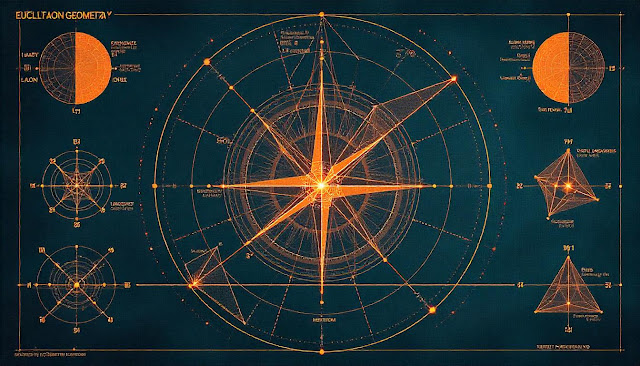Euclid: The Father of Geometry and His Enduring Legacy
Euclid, widely known as the 'Father of Geometry,' stands as one of history’s most impactful mathematicians. His groundbreaking work, Elements, laid the foundation for modern geometry and mathematics, shaping the way we understand space, shapes, and logic. Despite living over two millennia ago, Euclid’s contributions remain relevant, making him a timeless figure in the world of science and education.
This blog post delves into Euclid’s life, his monumental achievements, and how his work continues to inspire mathematicians, scientists, and educators today.
Early Life and Background: The Mysterious Genius
Little is known about Euclid’s personal life, but historians believe he was born around 300 BCE in Alexandria, Egypt, during the Hellenistic period. Alexandria was a hub of intellectual activity, home to the famous Library of Alexandria, where Euclid likely studied and taught.
Euclid’s exact origins remain a mystery, but his legacy is undeniable. He is often described as a kind and patient teacher, dedicated to sharing knowledge with his students. His passion for mathematics and logical reasoning set the stage for his monumental contributions.
The Elements: A Masterpiece of Mathematics
Euclid’s most famous work, Elements, is a 13-volume treatise that systematically organizes and explains the principles of geometry. Written around 300 BCE, it covers topics such as:
Plane Geometry: The study of flat shapes like triangles, circles, and polygons.
Number Theory: The properties of numbers and their relationships.
Solid Geometry: The study of three-dimensional shapes like cubes, spheres, and pyramids.
Elements is not just a collection of theorems—it’s a masterpiece of logical reasoning. Euclid introduced the concept of axioms (self-evident truths) and used them to derive complex geometric principles. This method of deductive reasoning became the gold standard for mathematical proofs.
Key Contributions to Mathematics
Euclid’s work revolutionized mathematics and laid the groundwork for future discoveries. Some of his most significant contributions include:
Euclidean Geometry: The study of flat, two-dimensional spaces based on his axioms.
The Parallel Postulate: A fundamental principle in geometry that sparked centuries of debate and led to the development of non-Euclidean geometries.
The Euclidean Algorithm: A method for finding the greatest common divisor of two numbers, still used in computer science and cryptography today.
Geometric Proofs: His systematic approach to proving theorems set the standard for mathematical rigor.
Euclid’s Influence on Science and Education
Euclid’s Elements was so groundbreaking that it became the primary textbook for teaching mathematics for over 2,000 years. Its influence extends beyond geometry, impacting fields like:
Physics: Isaac Newton and Albert Einstein both drew inspiration from Euclidean geometry.
Engineering: Architects and engineers use Euclidean principles to design structures and solve spatial problems.
Computer Graphics: Modern 3D modeling and animation rely on Euclidean geometry to create realistic visuals.
Euclid’s work also played a crucial role in the development of algebra, calculus, and even philosophy, as his logical methods influenced thinkers like René Descartes and Immanuel Kant.
Euclid’s Legacy: A Timeless Impact
Euclid’s contributions have stood the test of time, making him one of the most celebrated figures in the history of mathematics. His work continues to be taught in schools and universities worldwide, proving that his ideas are as relevant today as they were in ancient Alexandria.
Beyond mathematics, Euclid’s legacy is a testament to the power of curiosity, logic, and dedication. He showed that by building on simple truths, we can unlock the mysteries of the universe.
Fascinating Facts About Euclid
Euclid’s Elements is one of the most widely published books in history, second only to the Bible.
His work was preserved and translated by Islamic scholars during the Middle Ages, ensuring its survival.
The term “Euclidean geometry” is named in his honor, distinguishing it from non-Euclidean geometries developed in the 19th century.
Euclid’s influence extends to art, with Renaissance artists using his principles to create realistic perspectives in their paintings.
Conclusion: The Enduring Genius of Euclid
Euclid’s work is a cornerstone of human knowledge, bridging the gap between ancient and modern mathematics. His dedication to logic, precision, and education has inspired countless generations of thinkers, proving that the pursuit of knowledge is a timeless endeavor.
As we continue to explore the mysteries of the universe, Euclid’s legacy reminds us that even the most complex problems can be solved by breaking them down into simple, logical steps.
Find out my favorite Health and Fitness products here: https://linktr.ee/iamatiiq




.jpg)
.jpg)
Comments
Post a Comment